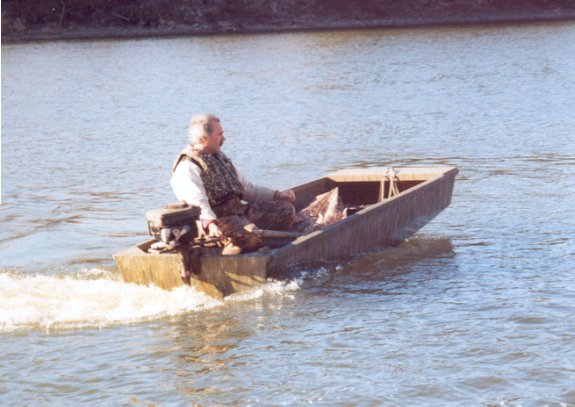John Bourbon Jr.
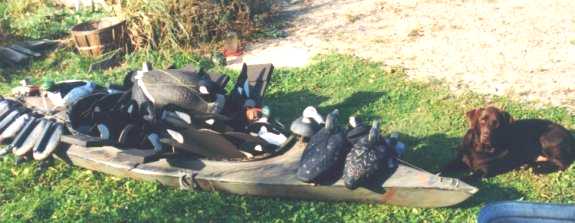
Here is a picture of my duck boat. It's a 14.5' long Mirrorcraft. The motor is a 28 hp Special
model Evinrude. The fast grass that you see is wire tie wrapped to a boat blind made from 2x2's
and heavy fencing. The front is hinged and will swing out of the way for driving down the road
and getting in and out of the boat. The boat blind is 11 feet long with the port side being
fixed and immovable. The starboard side looks identical. However the rear 6 feet is really one
giant door that swings forward to allow getting in and out. It also makes a first rate place
for working over the side of the boat, pulling decoys and such. This boat may well be the
heaviest 14-foot boat known to man. Since the boat has no seats the manufacturer used a 1/4" thick full
length/full width aluminum plate floor with a sheet of 3/4" marine plywood on top of that to
stiffen the boat. When loaded with 2 hunters, gear, and a dog and 75 decoys, its all the boat
can do to get out of its own way even with a 28 hp motor.
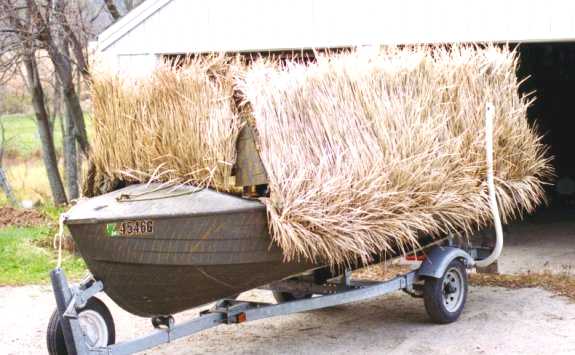
Here is a shot of the interior of my 14 foot Mirrocraft. The cockpit is 9 foot long by 32
inches wide. The fast grass makes a fair to good windbreak. As you can see there is no roof,
a situation I hope to correct this year. The guy pictured is Dave Diefenderfer of Manassas VA,
my hunting partner of some 9 years now. If you look real close by his leg, you can see Kiowa,
a small chocolate lab sticking her head out. When this picture was taken she belonged to Dave.
Dave unfortunately had to give her up, and she now lives with me.
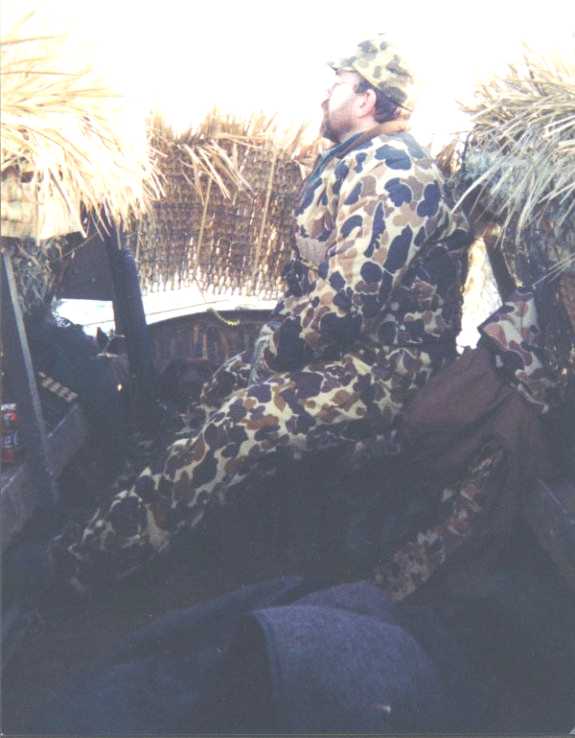
This picture shows how I shaped the bottom on my combination layout/jon
boat while it was under construction. The beams coming down out of the
ceiling held the midships of the bottom in place while the 3/4" shim under
the transom provided some rocker in the rear of the boat. Under the forward
part of the bottom, I wedged a 4x4 to force the bottom to have some rise in
the forward part. Once I attached the bow and side pieces, the shape of the
bottom was made permanent.
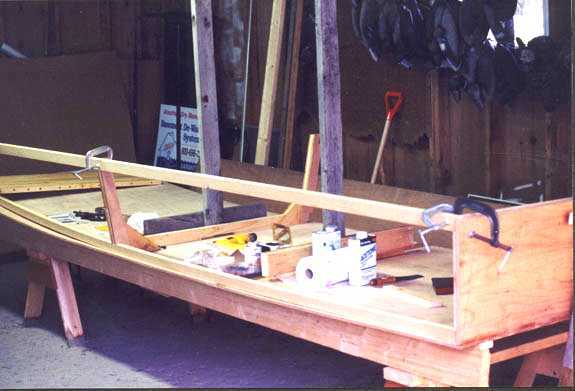
This is a picture of my hybrid Briggs and Stratton/Eska outboard that my
friend Ruel Elliott of Colchester Vt put together. He took a 25 year old
Eska motor leg, mounted an aluminum plate cut to shape and drilled with
mounting holes. On top of the plate there are rubber motor mounts to help
reduce the vibration from the 5hp, 4 stroke, single cylinder Quantum series
lawn mower motor. This motor has a compression release to help with the
pull starting. It generally starts on the first or second pull. To couple
the motor's output shaft to the outboard's shaft, Ruel devised a coupling
with a hole on either side for the appropriate size shaft.
This motor does not have a water pump and will run in extremely cold
weather without fear of freezing up. In sea trials, this motor pushed a 12
foot aluminum boat at 7mph and got 28 mpg! We are currently experimenting
with different size props to see what works best.
Since this picture was taken, I have painted it with a killer camo paint
job.
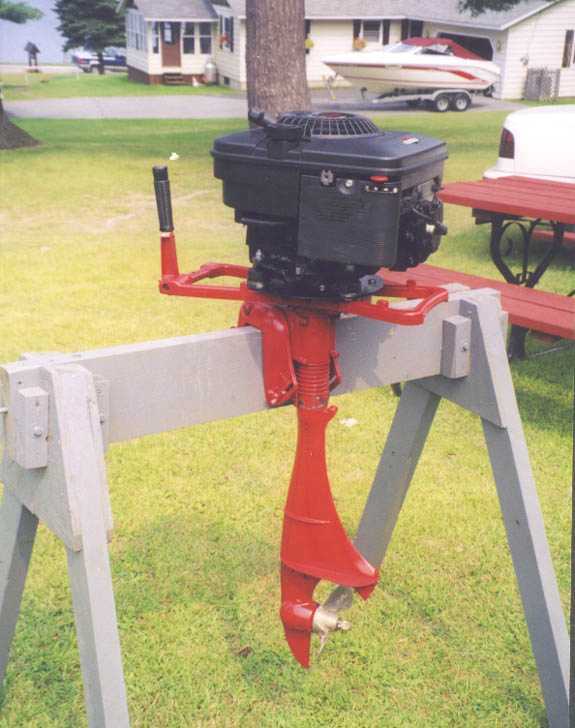
Here is a picture of the completed boat (which I named Pigwitch) and the Briggs
5hp/Eska outboard. This particular picture shows it moving right along using a 3
bladed prop from a 7.5 hp ESKA. Since this picture was taken, I have switched to
a 2 bladed prop from a 6hp ESKA, which runs with less vibration but still
achieving about the same boat speed. When I hunt from this boat, I lay on an
inclined board which runs from just under the seat to the mid-ship frame. This
allows me to keep all of me but my head lower than the side of the boat for true
low profile hunting.
I constucted this boat from plans that existed only in my head. As you can
probably tell from the construction photo, figuring out how to make the boat was
almost as much fun as hunting from it.
